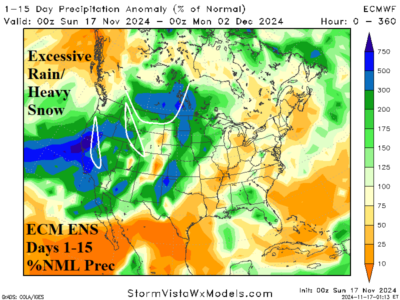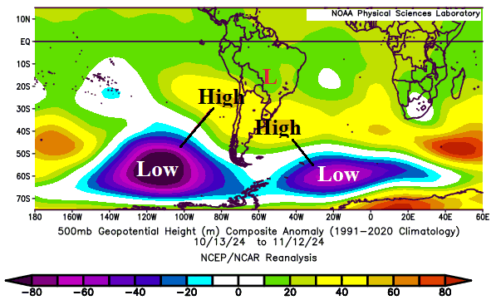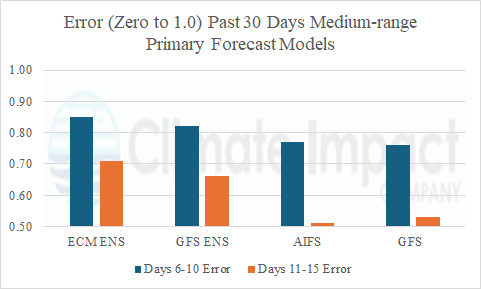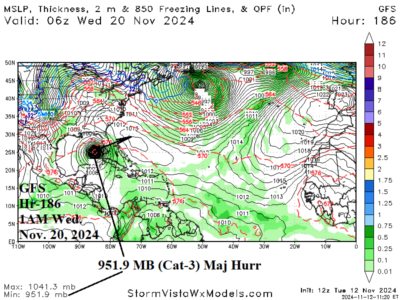11/17/2024, 10:09 am EST
A stormy weather pattern develops on the West Coast this week. Heaviest precipitation is on the Northwest Coast early this week shifting the California Coast late this week/weekend. ECM ENS maintains the stormy pattern across California next week.




